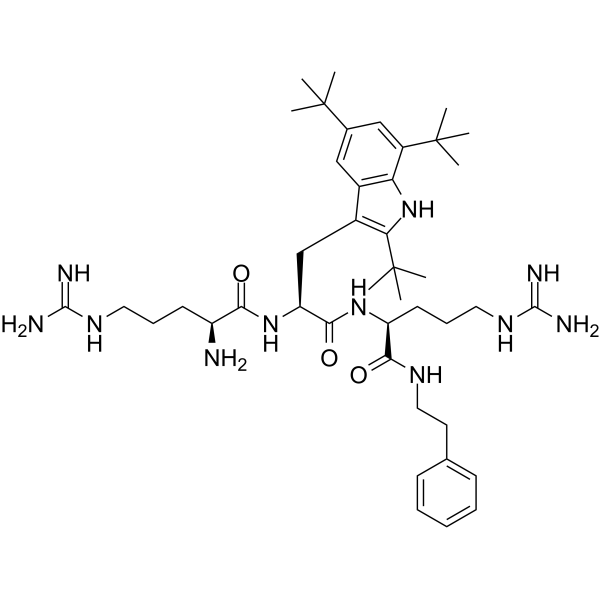| Description |
Voxvoganan (LTX-109), a topical antimicrobial, is highly effective against S. aureus with a MIC range of 2 to 4 μg/mL. Voxvoganan can be used for the research of bacterial skin infections, fungal infections and nasal decolonisation of MRSA[1][2].
|
| Related Catalog |
|
| In Vitro |
Voxvoganan (LTX-109) is an investigational antimicrobial agent with a membrane-lysing mechanism of action, based on the biological principle of innate immune effectors, lytic peptides. Voxvoganan has a rapid bactericidal lytic activity. Voxvoganan demonstrates in vitro bactericidal activity against a number of S. aureus isolates resistant to several classes of antimicrobial agents evaluated in this study[2]. Voxvoganan (LTX-109) is a broad-spectrum, fast-acting bactericidal antimicrobial agent that binds to negatively charged membrane components on the bacterial cell wall, which leads to membrane disruption and cell lysis. Voxvoganan is a first-in-class chemically synthesized, small peptide drug that is stable against protease degradation. Topical application of Voxvoganan has a good safety profile and a low bioavailability. Voxvoganan demonstrates good activity against Staphylococcus aureus strains that are susceptible and resistant to mupirocin[3].
|
| References |
[1]. Johan Isaksson, et al. A synthetic antimicrobial peptidomimetic (LTX 109): stereochemical impact on membrane disruption. J Med Chem. 2011 Aug 25;54(16):5786-95. [2]. Louis D Saravolatz, et al. In vitro activities of LTX-109, a synthetic antimicrobial peptide, against methicillin-resistant, vancomycin-intermediate, vancomycin-resistant, daptomycin-nonsusceptible, and linezolid-nonsusceptible Staphylococcus aureus. Antimicrob Agents Chemother. 2012 Aug;56(8):4478-82. [3]. L D Saravolatz, et al. Postantibiotic effect and postantibiotic sub-MIC effect of LTX-109 and mupirocin on Staphylococcus aureus blood isolates. Lett Appl Microbiol. 2017 Nov;65(5):410-413.
|
